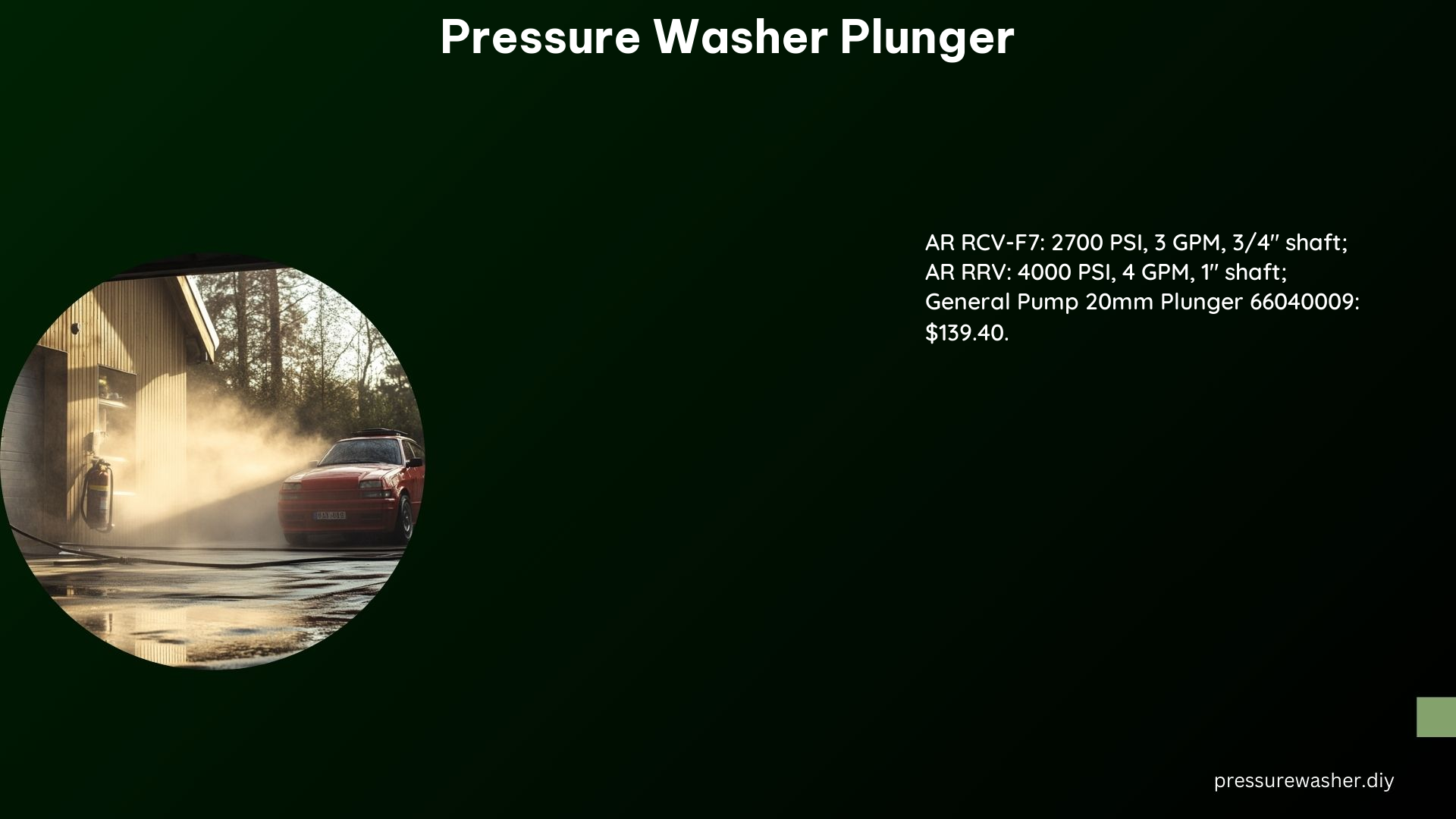Pressure washers are powerful cleaning tools that rely on a critical component called the plunger to generate high-pressure water streams. The plunger, typically made of durable ceramic material, plays a vital role in the pump’s operation, and understanding its function, maintenance, and replacement is essential for ensuring the longevity and performance of your pressure washer.
Signs of Trouble with a Pressure Washer Plunger
-
Discolored Oil: Regularly check the pump’s oil for any unusual discoloration or contaminants. This can be an early indicator of a cracked or broken ceramic plunger, which can allow water to seep into the pump’s crankcase. Addressing this issue promptly is crucial to prevent further damage to the pump.
-
Unusual Noises: Listen closely for any grinding, clunking, or other unusual sounds coming from the pump. These noises can signify a damaged plunger or worn-out seals, which can lead to decreased performance and potential pump failure if left unattended.
-
Water Leaks: Inspect the pump, particularly around the body and manifold, for any signs of water leaks. A cracked or broken ceramic plunger can cause water to leak into the pump’s crankcase, reducing lubrication and potentially causing significant damage to the internal components.
Inspecting and Replacing a Cracked or Damaged Ceramic Plunger

-
Visual Inspection: To inspect the plunger, you’ll need to disassemble the pump. Carefully examine the ceramic plunger for any visible cracks, chips, or signs of wear. Look for corrosion or damage to the surrounding components as well, as these can contribute to plunger failure.
-
Replacement: If the plunger is found to be cracked or damaged, it’s essential to replace it with a compatible model from the manufacturer or a reputable supplier. Ensure that the replacement plunger matches the size and configuration of the original, typically ranging from 20mm to 25mm in diameter. Follow the manufacturer’s instructions closely when installing the new plunger to ensure proper sealing and prevent future leaks.
Common Issues with Plunger Packings and Identification
-
Worn-Out Seals: The plunger packings, or seals, are responsible for maintaining a tight seal between the plunger and the pump’s cylinder. Over time, these seals can become worn, cracked, or corroded, leading to water leaks and reduced pump performance. Regularly inspect the packings and replace them as needed to ensure optimal operation.
-
Improper Installation: Correct installation of the plunger packings is crucial for their longevity and the pump’s overall performance. Ensure that the packings are installed according to the manufacturer’s instructions, as improper installation can cause premature wear and failure.
Technical Specifications of Pressure Washer Plungers
-
Material: Ceramic plungers are the most common choice for pressure washer pumps due to their exceptional durability and resistance to corrosion. The ceramic material can withstand the high pressures and abrasive environments encountered during pressure washing operations.
-
Size and Configuration: Pressure washer plungers come in a variety of sizes, typically ranging from 20mm to 25mm in diameter. The specific size and configuration of the plunger are designed to fit the pump model and brand, so it’s essential to obtain a replacement that matches the original specifications.
-
Pressure Rating: Pressure washer plungers are engineered to handle high pressures, typically ranging from 2,000 to 4,000 PSI. The plunger’s pressure rating must be compatible with the pump’s maximum operating pressure to ensure safe and efficient performance.
By understanding the signs of trouble, proper inspection and replacement procedures, and the technical specifications of pressure washer plungers, you can proactively maintain your pressure washer and ensure its long-term reliability and performance. Remember to always consult the manufacturer’s instructions and use genuine replacement parts to protect your investment and achieve the best cleaning results.
References
- https://pressurewashoutlet.com/collections/ar-pumps-ceramic-plungers
- https://shoppressurewasherparts.com/product/parts/pump-kits/gp-interpump/plunger-66040009/
- https://simpsoncleaning.com/aaa-triplex-pump/
- https://www.pressurewashersdirect.com/power/triplex-pressure-washer-pumps.html
- https://www.amazon.com/Horizontal-Replacement-Pressure-Presssure-Machines/dp/B0CB7RM763
